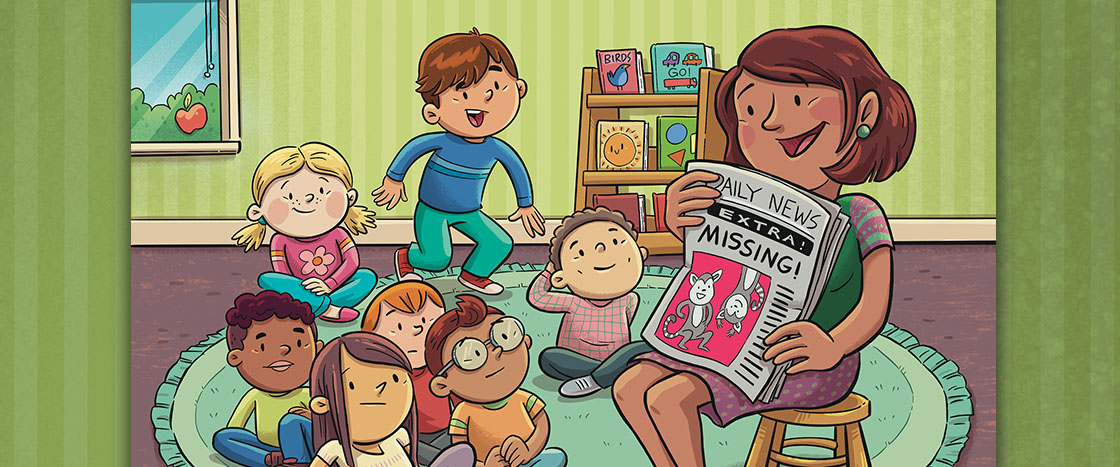It was morning meeting.
“Liam, come sit down,” my teacher said. “I have big news!”
She told us that two lemurs had escaped from the zoo.
“The zoo cannot find them!” she said.

Fiction inspired by a true story
Learning Objective: Children will compare fiction and nonfiction texts about lemurs.
It was morning meeting.
“Liam, come sit down,” my teacher said. “I have big news!”
She told us that two lemurs had escaped from the zoo.
“The zoo cannot find them!” she said.
“I love lemurs,” I said. “Maybe I will find them.”
“No way!” said Emily.
It was time to line up.
“What if they are here?” I asked.
“Liam, there are no lemurs in school!” said Emily.
“See, Liam?” said Emily. “There are no lemurs in art class.”
“Maybe they will be at lunch,” I said.
“There are no lemurs at lunch!” said Emily.
“They must not like Taco Tuesday,” I said.
“Nope,” said Emily. “There are no lemurs at recess.”
“I thought they would be here!” I said.
“I do not see any lemurs in the library!” said Emily.
“I even asked the librarian,” I said.
The day was over. It was time to go home.
“Don’t be sad,” said Emily. “I got you a lemur book!”
“You were right,” I said. “Oh well. I guess there are no lemurs in school.”
About the Story
English Language Arts Focus
Fiction vs. nonfiction
Implementation
Pairings and Text Connections
Before-Reading Resources
Suggested Reading Focus
Comparing fiction and nonfiction (20 minutes)
After-Reading Skills Practice